Every Janmashtami, I watch my kitchen slowly transform into something more than just a place to cook. It becomes a space of intention. The air fills with the scent of ghee warming on the stove, crushed cardamom, and the earthy touch of banana leaves. It’s not about impressing anyone—it never is. It’s about preparing something worthy. Something I’d be proud to offer to Krishna.
And in that quiet hush before midnight, I’ve often found that a simple, heartfelt thali can hold more reverence than the most elaborate ritual.
That’s why what I cook and how I cook it really matters to me. I can’t bring myself to use pesticide-laden, mass-produced ingredients on a plate meant for Krishna. It just doesn’t feel right.
So every year, I turn to organic prasad ingredients—pure, clean, and close to nature. There’s a kind of energy in them that you can taste. And when I use them in my Janmashtami dishes, it feels like I’m offering something that’s not only traditional, but truly aligned with the spirit of the day.
Bhog: The Unspeakable Simplicity of Offering
At first glance, bhog might seem like just food. But to me, it’s always felt like something more a quiet gesture, a wordless offering. It’s how I express devotion, not through chants or rituals, but through taste, texture, and warmth on a plate.
In Ayurveda and satvik traditions, I’ve learned that food is never neutral. It either nourishes and uplifts, or it leaves us feeling heavy and dull. That’s why I choose organic ingredients whenever I prepare bhog, especially on Janmashtami. Foods grown in rhythm with nature feel alive in a way that’s hard to explain—but easy to feel.
When I cook with organic Janmashtami recipes, I notice that subtle difference. It’s as if the food carries a purity that goes beyond ingredients. And in that moment, the act of cooking becomes sacred. As you prepare for the divine celebrations, make sure your Janmashtami Puja Samagri list includes all the essential organic items for a spiritually fulfilling ritual.
Why Organic Feels Different—Especially During Festivals
Is there a hard rule that says you must use organic for bhog or Krishna Janmashtami food items? No. But there’s an unspoken one, woven into the spirit of Janmashtami itself: purity, simplicity, and harmony.
Organic food is:
• Grown without chemical pesticides and fertilisers
• Usually seasonal, fresh, and more flavourful
• Free from preservatives, additives, and over-processing
• Often harvested by hand, in soil that’s treated with care
So while no one will judge your puri if the atta isn’t certified, you’ll know. And that knowing changes the energy of the offering.
11 Organic Ingredients That Belong in Your Janmashtami Bhog
Here’s a lovingly curated list of ingredients that honour both the spirit of the festival and the wellness of your body—perfect for authentic organic Janmashtami dishes.
1. A2 Cow’s Milk
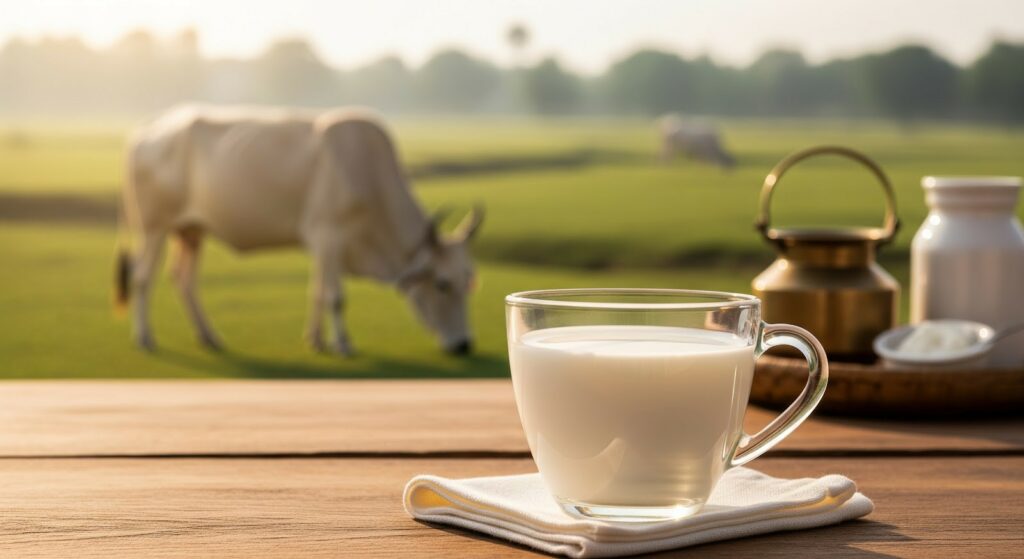
Not your generic tetra pack. This is milk from native Indian gir cows—nutrient-rich, easier to digest, and aligned with traditional Ayurvedic wisdom.
Use it for: Kheer, badam milk, or a warm glass with a whisper of turmeric.
2. Homemade Organic Curd
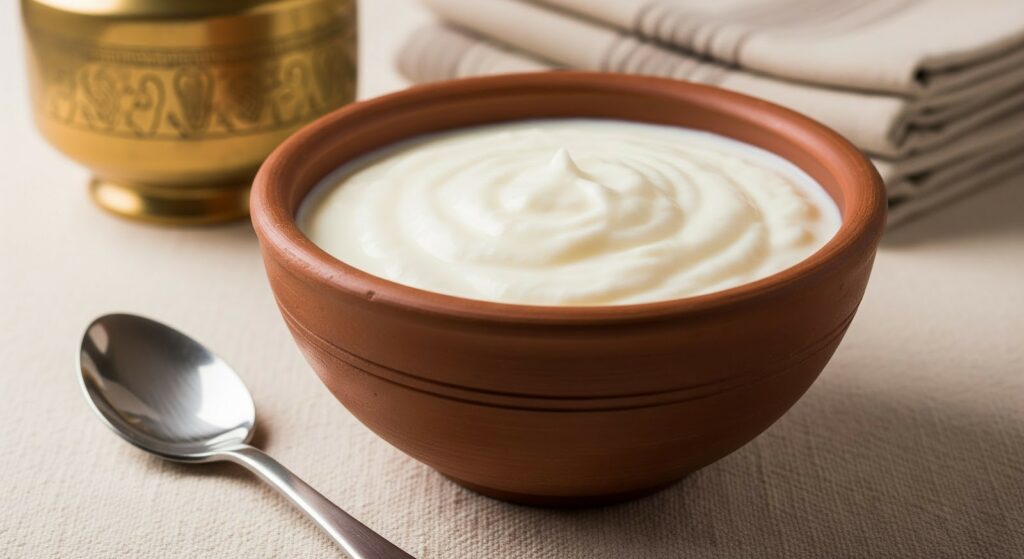
Ditch the supermarket yoghurt tub. Set curd at home with A2/A2 gir cow milk—it’s alive, cooling, and sacred. Creamy curd is a spiritual and digestive ally.
Use it for: A satvik sweet dahi bowl, a banana-curd mix, or simply on its own as bhog.
3. Unrefined Jaggery (Gur)
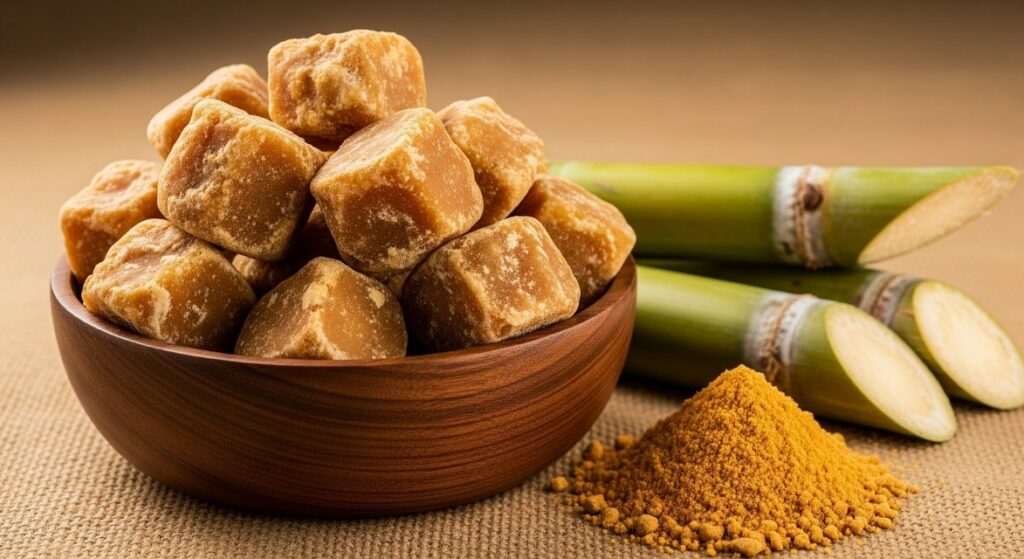
Shiny white sugar has no place in sacred food. Gur, with its earthy aroma and dark richness, offers sweetness with soul—and a touch of minerals, too.
Use it for: Panakam (a jaggery drink), kheer, or to bind dry fruit laddus.
4. Organic Rice (Short-Grain or Red)
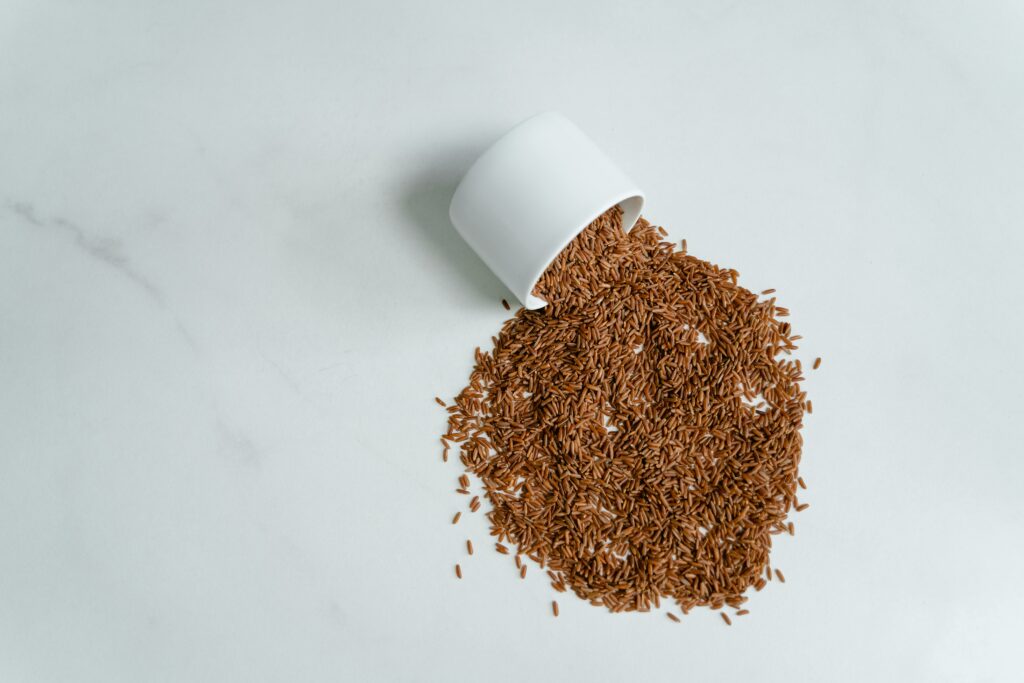
Basmati’s fine, but there’s something deeply comforting about hand-pounded or short-grain rice. Earthy, soft, and subtly nutty when cooked, it’s ideal for sacred dishes.
Use it for: Chawal ki kheer, banana-poha, or simply steamed with ghee.
5. Stone-Ground Whole Wheat Flour
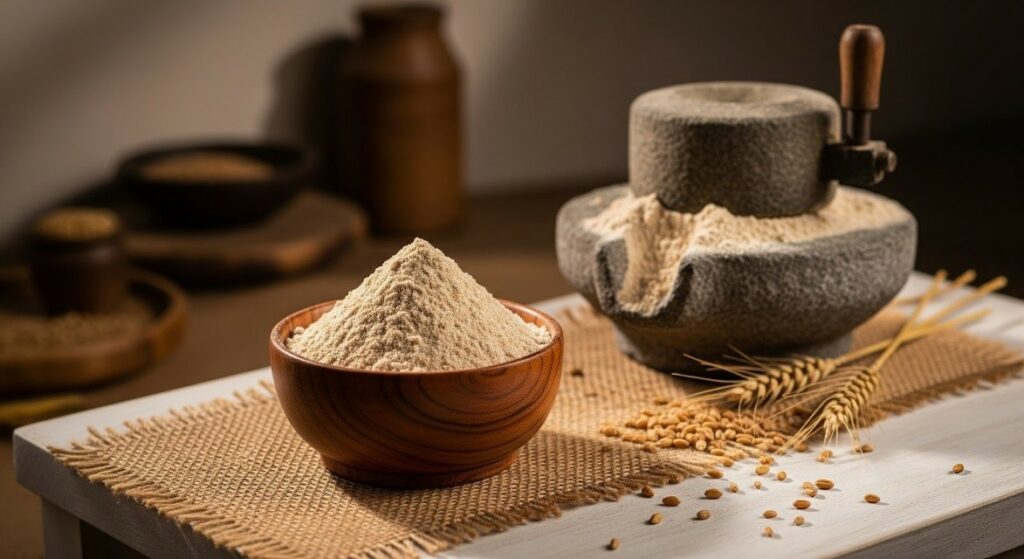
The atta you find in supermarkets has usually been stripped of character. Stone-ground flour, by contrast, keeps the wheat’s inner spirit intact.
Use it for: Puri, halwa, or soft phulkas for your bhog plate.
6. A2/A2 Gir Cow Ghee
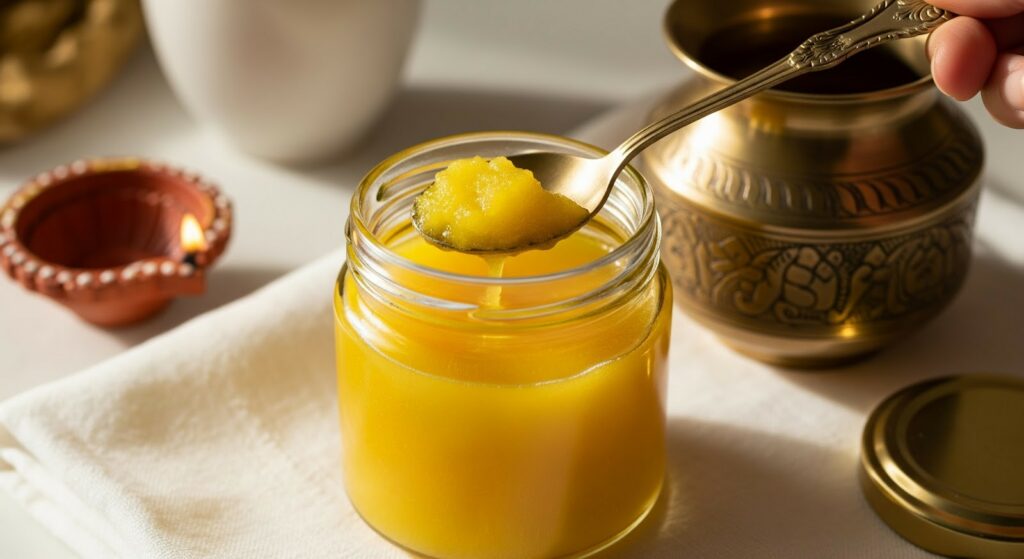
If you’ve ever tasted real, slow-churned A2/A2 gir cow ghee, you know the difference. It isn’t greasy—it’s golden, fragrant, and medicinal. And when it hits a hot pan, something holy happens.
Use it for: Drizzling, cooking, frying puris, or finishing laddoos.
7. Seasonal Organic Fruits

Krishna loved fruit—joyfully, messily, naturally. Think sticky banana fingers, sweet guava smiles, and jamun-stained lips. Organic fruit isn’t uniform. It bruises. It has marks. But it tastes alive.
Use it for: Fruit chaat, sweet poha, raw offerings, or as is.
8. Raw Honey (Never Heated)
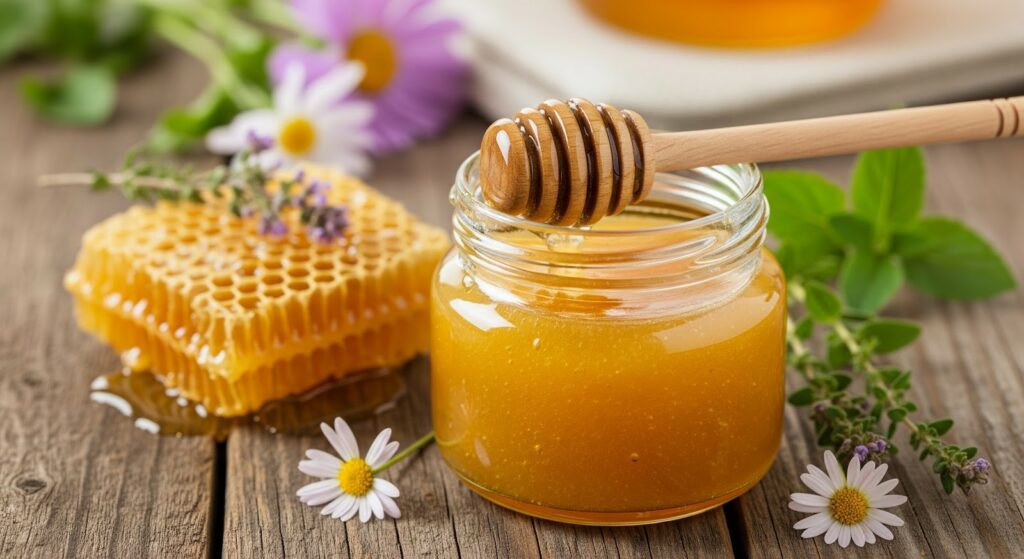
Raw, unfiltered honey is considered a sattvic sweetener when taken unheated and in small quantities. It should never go in boiling kheer.
Use it for: Tulsi water, cooled panakam, or a final drizzle on dry fruit laddoos.
9. Desi Chana or Bengal Gram
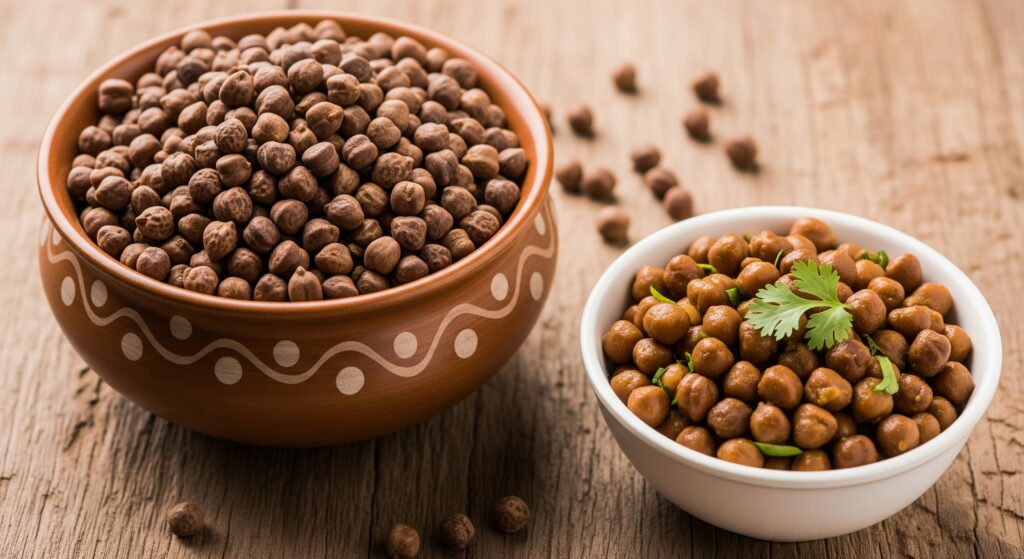
This isn’t trendy. It’s timeless. Dry-roasted, boiled, or sweetened, chana is nourishing, versatile, and easy on the gut.
Use it for: Chana prasad, chana-poha, or dry chana sweets.
10. Tulsi Leaves
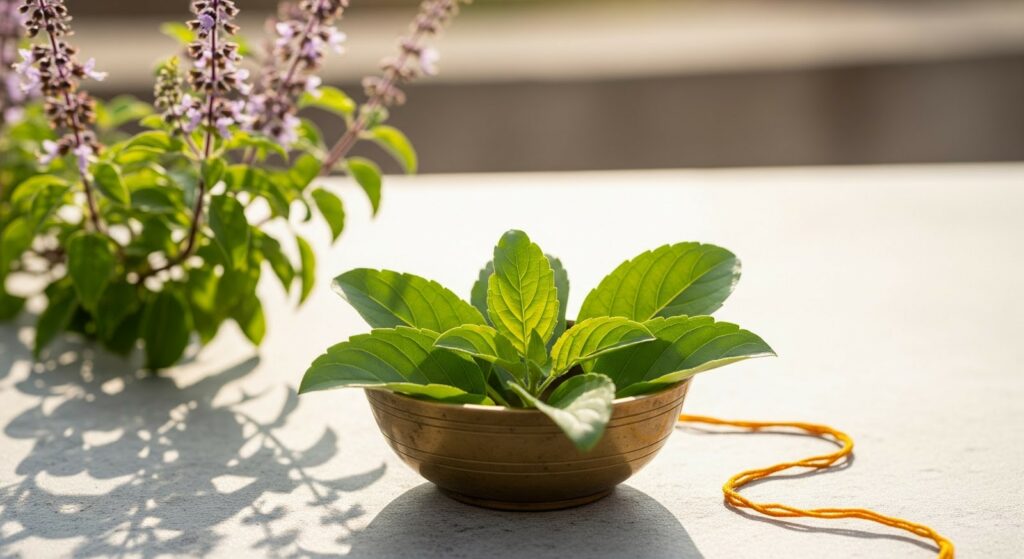
Not a food. But a sacred plant that brings grace to your bhog. Avoid touching with your nails, and offer with a calm hand.
Use it for: Placing on sweets or rice dishes as a divine garnish.
11. Dry Fruits & Nuts (Preservative-Free)
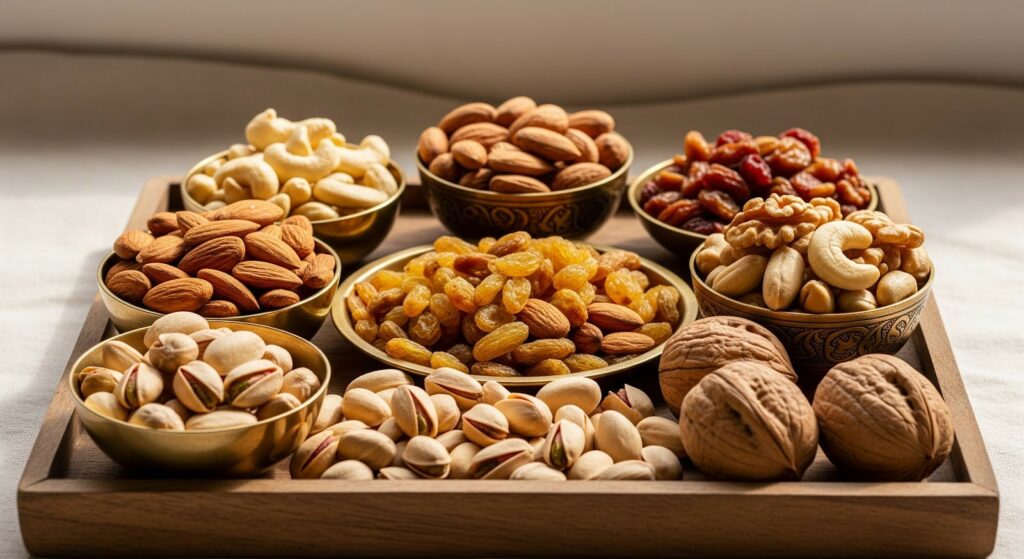
A handful of soaked almonds. A spoonful of raisins. A cashew or two. No sulphites, no artificial gloss, just good old-fashioned nuts that taste the way nature intended.
Use it for: Topping kheer, making laddoos, or tossing with chana.
Sourcing Tips: Getting the Real Deal
• Look for labels like “India Organic” or “Jaivik Bharat”
• Buy local if you can, farmers’ markets, co-ops, even verified Instagram sellers
• Festive bundles? Try OMKITCHEN and similar brands for curated, certified bhog kits
Bhog Cooking: Less Performance, More Presence
Here are a few quiet reminders to keep things devotional, not dramatic:
• Cook in earthenware, steel, or copper—nothing Teflon-coated
• Avoid garlic, onions, and overpowering masalas
• Don’t reheat leftovers—bhog should be fresh, satvik, and infused with calm
• Say a prayer while stirring. Don’t rush. Let the pot do its quiet magic.
In the End: Why This Matters
Making bhog with clean, organic ingredients is a kind of modern-day tapasya. You’re choosing patience in a world that screams for shortcuts. You’re choosing intention where convenience reigns. You’re cooking not just for Krishna—but for the Krishna inside you.
FAQs
Can I use ghee and jaggery in a satvik diet?
Absolutely—when unrefined and used mindfully, both are considered satvik.
Is organic food required for bhog?
Not required—but better if you can source. Bhog is sacred. Organic just feels more aligned with that.
How do I know if it’s truly organic?
Look for third-party certifications or lab test report. If you’re buying local, ask questions. Know your source.
What can I make with these ingredients?
Poha with banana, rice kheer, panakam, ghee-roasted chana, laddoos, puris with fruit chutney, and more.
Read More:
What Is the Significance of Raksha Bandhan, When & Why Is It Celebrated?
The Spiritual Science of Fasting on Krishna Janmashtami
Krishna’s Favourite Foods: What They Teach Us About Balanced Eating
Vrat Ka Khana: Top 7 Traditional Fasting Items for Janmashtami

